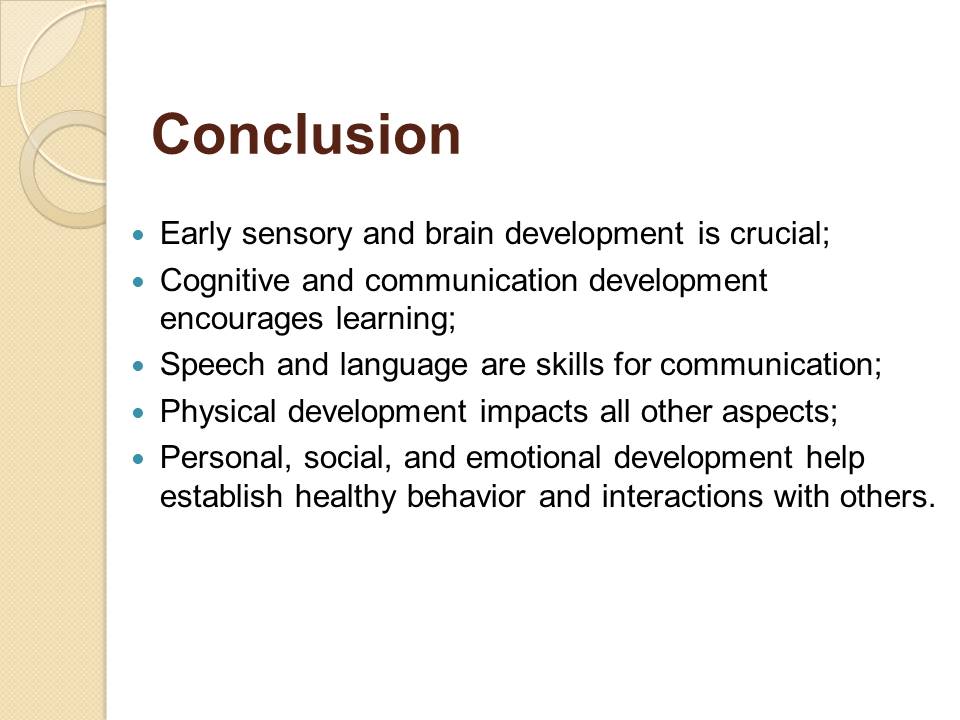Sensory development in the first year of life
Even though all children develop differently, baby’s sensory development usually follows the same pattern:
- Sight: fully developed at 7-12 months.
- Touch: well-developed at birth.
- Taste and smell: well-developed at birth.
- Hearing: fully developed at one month.
In the study of child care, it is crucial to understand theoretical perspectives on child development. The most pertinent theories and their impact on current frameworks are considered in this presentation. Firstly, it is necessary to understand the sensory development in the first year of life. A baby begins to experience the new world through 5 senses: sight, touch, taste, smell, and hearing. During the first twelve months, senses develop faster than they will be during the rest of life, so it is essential to encourage development.
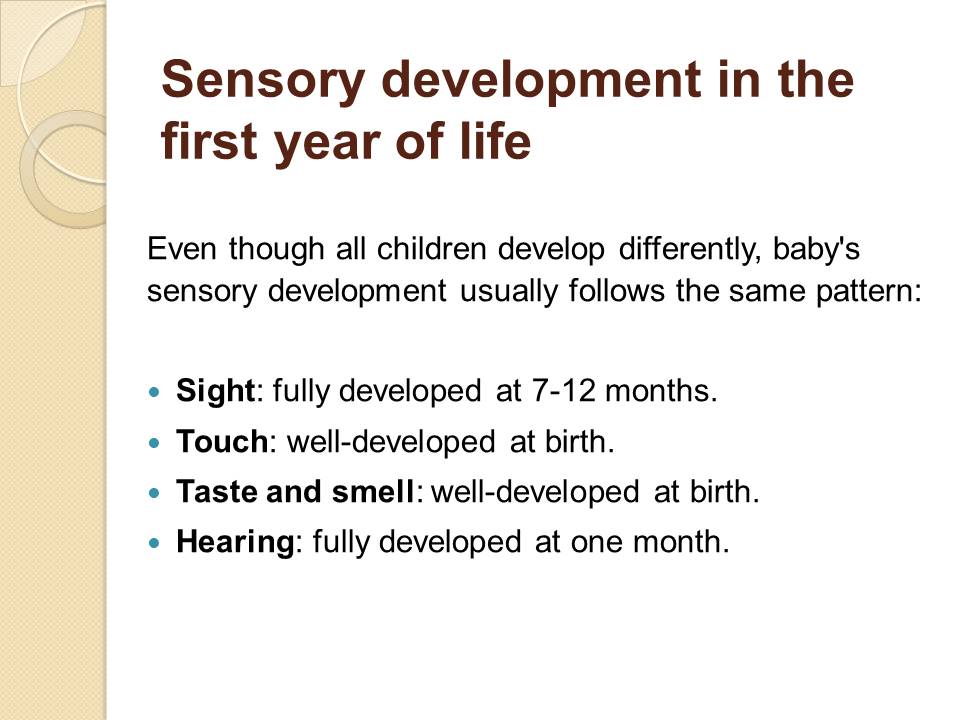
Neurological and brain development in the early years
Three theories by Johnson:
- the maturational perspective (cognitive abilities develop as cortex areas related to them mature);
- the interactive specialization (cognitive abilities develop as cortex areas related to them expand interactions);
- the skill-learning hypothesis (some areas are active during skill-learning, others – after skills are learned).
Brain development in the early years is particularly important for the infant’s further interaction with the world. Johnson suggested three theories of neurological and brain development in humans. In general, it depends on experience and brain maturation, so it is recommended to encourage the baby’s interaction with the environment. As mentioned before, the infant’s vision develops fully only by the age of one year, so parents ensure that babies can see their faces by holding them close. Overall, current practices aim at developing connections in the cortex and effectively activating the brain.
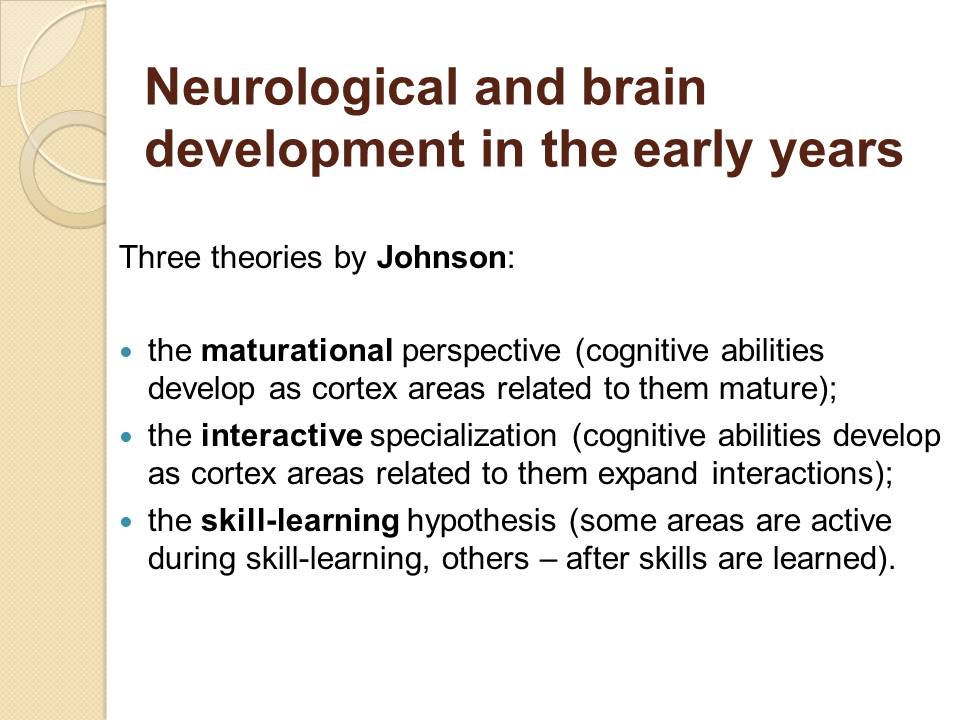
Cognitive development
The theory by Piaget describes four stages:
- Sensorimotor: basic reflexes, senses, responses;
- Preoperational: using language and thinking;
- Concrete operational: logical but concrete thinking;
- Formal operational: abstract logical thinking.
In the early years, the baby’s brain is developing rapidly, resulting in a significant improvement in cognitive abilities. A theory suggested by Piaget claims children play an active role in acquiring knowledge and interacting with the world. They gradually improve their cognitive skills from sensory experience to understanding abstract ideas. Piaget’s theory showed that children are not passive recipients of new information. Thus, it had a significant impact on methods of studying for children. The idea of discovery learning has been implemented in kindergartens and schools to support children’s learning through active exploration.
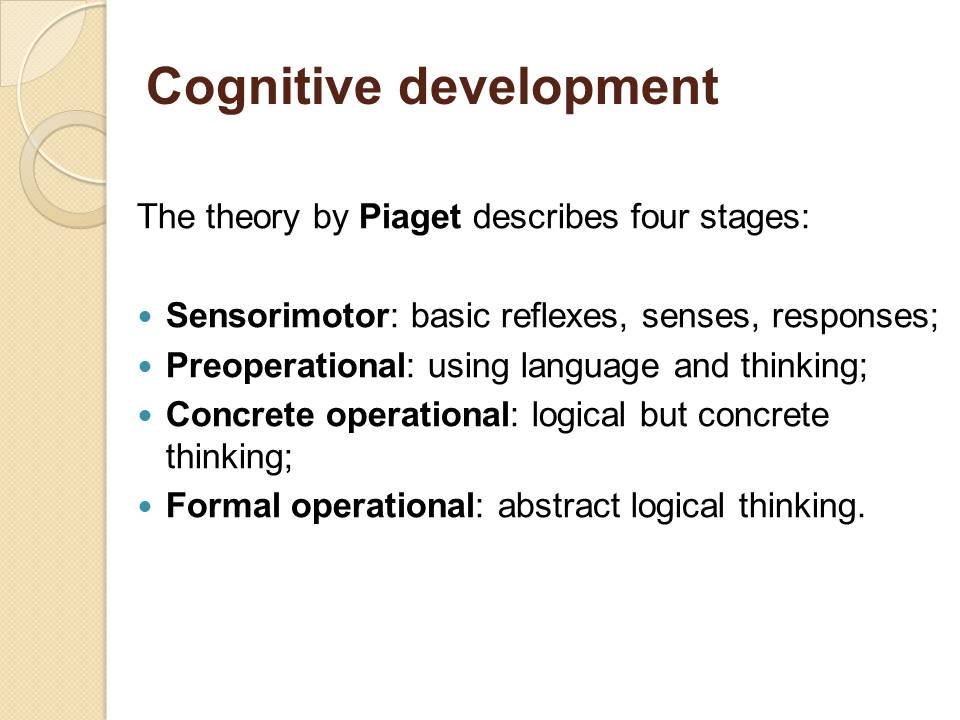
The definition of speech, language, and communication
- Speech: the ability to articulate sounds, forming words.
- Language: the way of human communication.
- Communication: conveying and receiving messages and information.
- Speech and language skills are needed for effective communication.
In order to understand theoretical perspectives related to speech, language, and communication development, it is necessary to define these terms first. All babies need help to learn to talk, and speech and communication do not develop on their own as it might seem. Speech refers to the ability to articulate sounds to express thoughts. Language is used by people to communicate and means using words in a conventional and structured way. Communication is the act of transferring information, which can be done in a verbal and nonverbal manner. In short, speech and language are the skills used for communication.
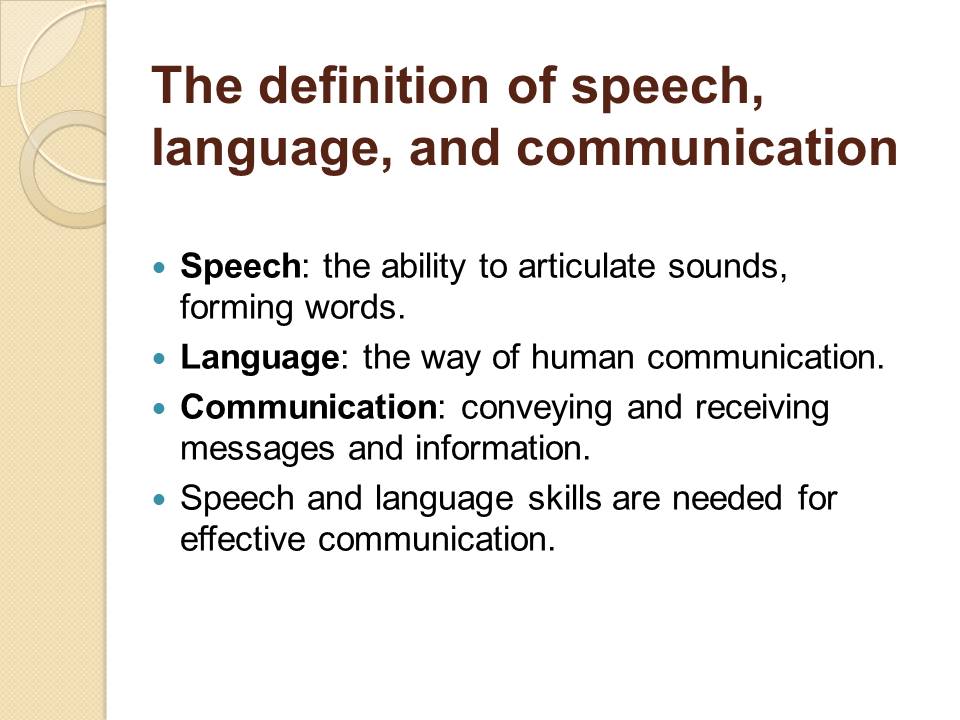
Speech, language and communication development
The theory of language development by Vygotsky:
- emphasis on language’s role in cognitive growth;
- language development results from social interactions;
- dependence of language on thought;
- three forms of language: social speech, private speech, silent inner speech.
Speech, language, and communication are connected, and all skills need to be present for comprehensive child development. Vygotsky believed that language plays a special role in cognitive development and that language and thought merge at the age of three years, producing inner speech. Language is seen as a way of transmitting information to children and, at the same time, a prevailing means of intellectual adaptation. Therefore, Vygotsky’s theory is relevant for current practices, and his idea of the connection between thought and speech is used for teaching children in classrooms.
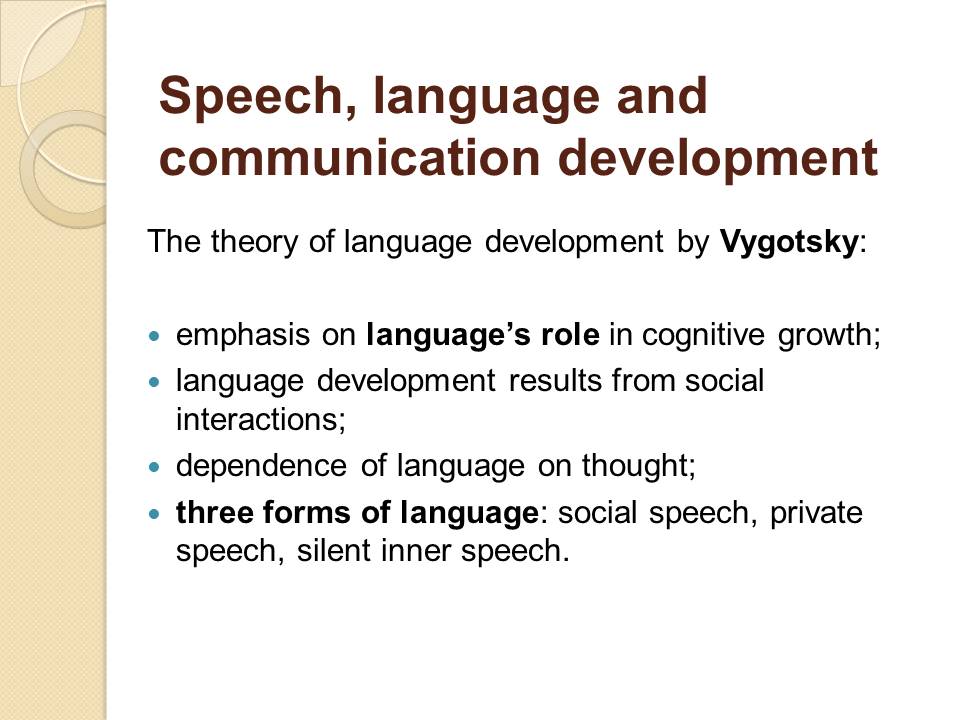
Physical development
Gesell’s Development Maturational Theory:
- physical development is based on biological aspects and occurs sequentially, in patterns;
- individual genetic can influence maturation;
- developmental age norms to monitor the child’s growth.
Understanding the aspects of children’s physical development is also essential for child care. Gesell suggested a Development Maturational Theory based on several assumptions. He believed that the reason for developmental changes in children lies primarily in aging processes. In other words, growth happens in a determined sequence and orderly stages. Besides, Gesell connected physical maturation with other developmental aspects of children. Unlike many other theorists, he suggested that learning and life experience are not the cause of development, but maturation is. The age norms for physical growth suggested by Gesell are still used in child care as they enable the specialists to monitor the child’s development.
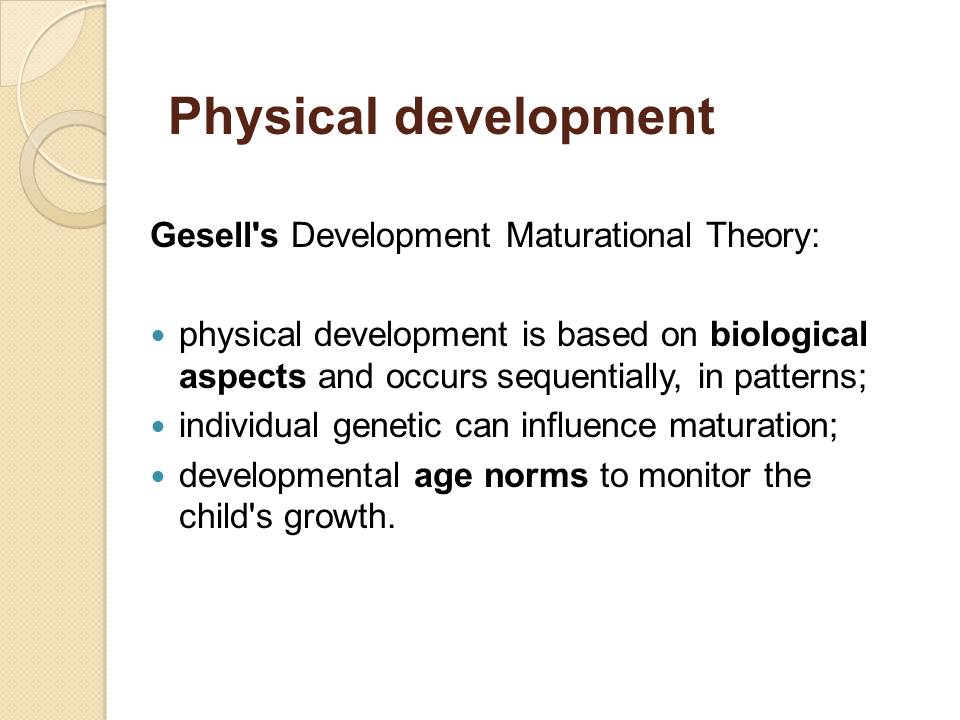
Personal, social and emotional development
- Skinner’spersonality theory: people learn through reinforcement and association.
- Erikson’s theory of psychosocial development: social interaction and experience throughout life.
- Bowlby’s attachment theory: relationships with caregivers influence social and emotional growth.
Personal, social, and emotional aspects of development are interrelated, and many factors influence the child’s growth in these fields. Skinner suggested a personality theory and claimed that learning occurs when behavioral patterns are established. He believed it could happen directly, through reward and punishment, or indirectly, through observation and learning. In terms of social growth, Erikson described eight stages of psychosocial development, from infancy to death. He thought that social challenges and conflicts impact the development of an individual throughout life. Bowlby’s Attachment Theory considers social and emotional growth and views the connection between the child and the caregiver as the primary factor for establishing healthy behaviors. All three theories are still used today by parents and teachers, who ensure to provide the proper environment for children’s development.
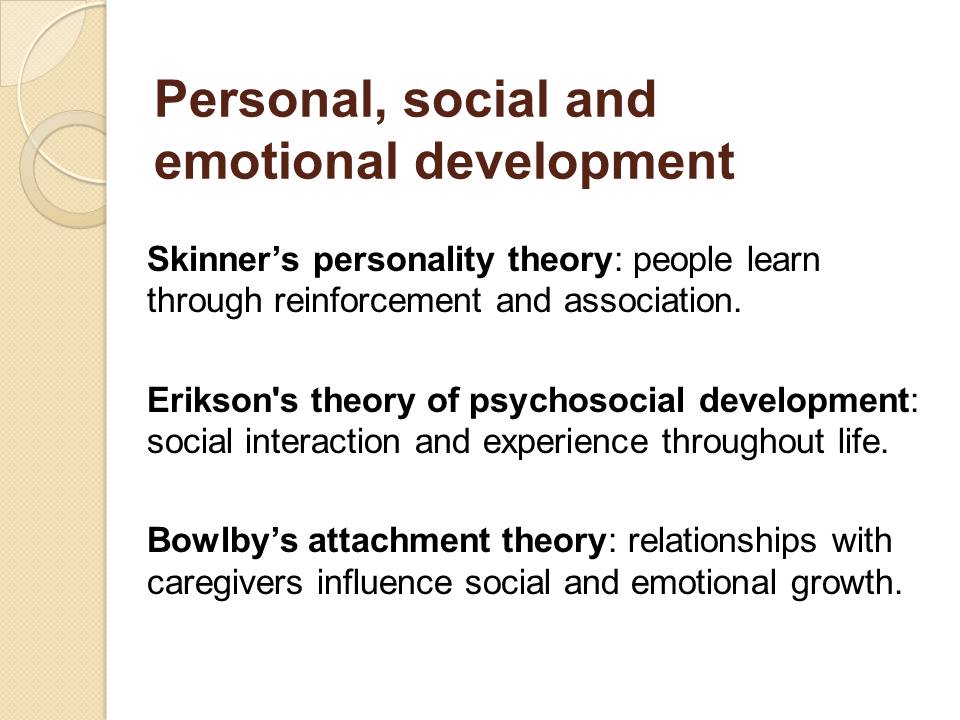
Conclusion
- Early sensory and brain development is crucial;
- Cognitive and communication development encourages learning;
- Speech and language are skills for communication;
- Physical development impacts all other aspects;
- Personal, social, and emotional development help establish healthy behavior and interactions with others.
To sum up, the main theoretical perspectives on child development were discussed in terms of sensory, neurological, brain, cognitive, speech, language, communication, physical, personal, social, and emotional growth. Besides, the impact of developmental models on current frameworks was considered. It can be concluded that prominent theorists have played a significant role in establishing contemporary child care practices. Most of the developmental aspects are interrelated, such as the brain and cognitive, social and emotional, speech and communication development, etc. The principles discussed in this presentation allow parents and teachers to monitor the child’s progress and encourage healthy growth.
